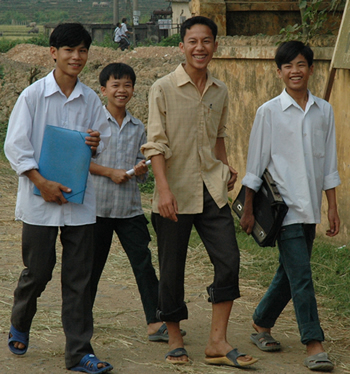When Children Grow Up With HIV
Setting an Adolescent HIV Research Agenda
February 2010—More than 150,000 children are living with HIV in the Asia-Pacific region, and almost all have had the virus since infancy. With access to antiretroviral therapy (ART) and social support, these children can lead healthy and productive lives. But the infrastructure developed to care for them was created for young children—and for a growing population of HIV-positive adolescents, it is proving to be increasingly inadequate.
Members of TREAT Asia's pediatric network—which includes clinical sites in Cambodia, India, Indonesia, Malaysia, Thailand, and Viet Nam—are experiencing this generational change firsthand. One-third of the children represented in the TREAT Asia Pediatric HIV Observational Database are now older than 12 years.
Recognizing the rapidly changing nature of pediatric HIV in Asia, in January TREAT Asia held its first adolescent HIV working group meeting, inviting researchers and orphan support experts to strategize about developing a regional adolescent research program. "More of the children under care in our network are becoming teenagers," noted Dr. Thanyawee Puthanakit of Chulalongkorn University and HIV-NAT, Thailand. "It is time for us to grow up with our children and take the next step by focusing on adolescents. I strongly believe that our network can become a leader in this area."

Boys walk together in the countryside outside Hoa Binh, Viet Nam. |
The meeting was the network's first opportunity to identify and prioritize research questions that will help clinicians and families better anticipate the psychosocial and medical needs of adolescents with HIV. Major research interests include behavioral risks (e.g., drug use, sex), sexual health, metabolic complications of long-term ART, HIV drug resistance, and salvage therapy.
"I think it is very important for TREAT Asia to begin an adolescent initiative," said Dr. Lynne Mofenson of the National Institute for Child Health and Human Development, U.S. National Institutes of Health. "While there is ongoing research in this area in the U.S., there may be unique characteristics in Asian children that would result in different outcomes related to growth, development, and toxicity of antiretroviral drugs. Thus it is critical that the region also evaluate these issues in Asia's youth."
After laying out a broad research agenda, the TREAT Asia pediatric network is now moving forward with the next phase of the adolescent HIV initiative. During the coming year, investigators will develop research tools to be used in the future by the TREAT Asia Pediatric HIV Observational Database. The complexities of working with adolescents are immense and will require novel, culturally sensitive approaches. Having access to informed treatment and care calibrated to the needs of adolescents could make the path to adulthood far less challenging.